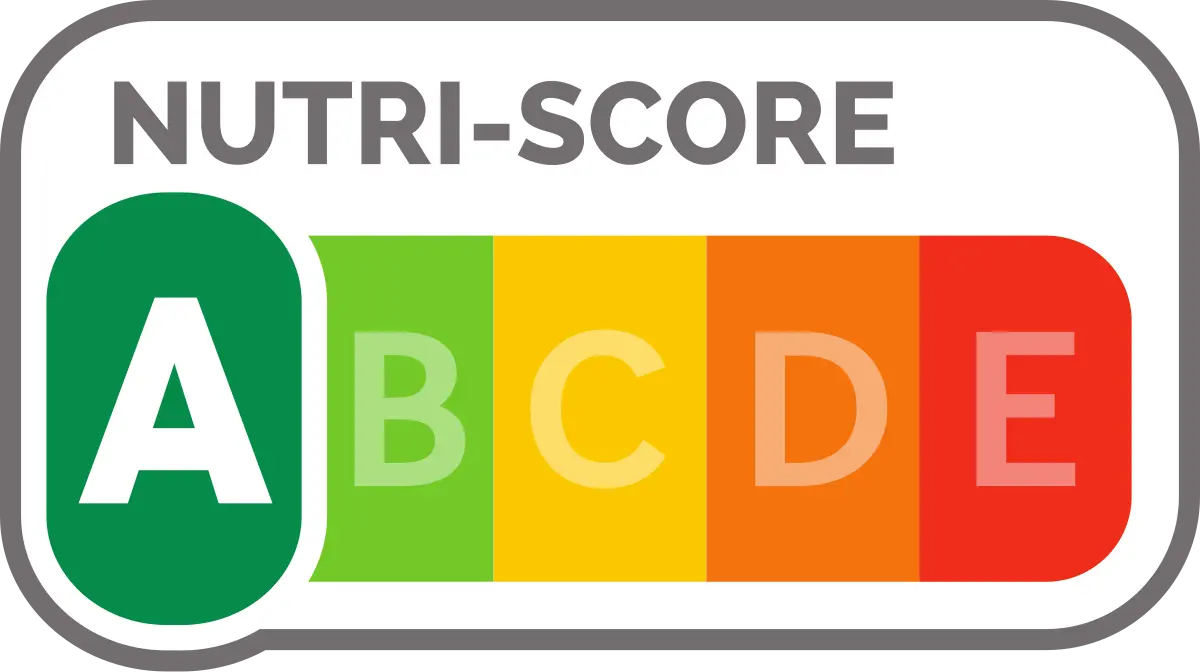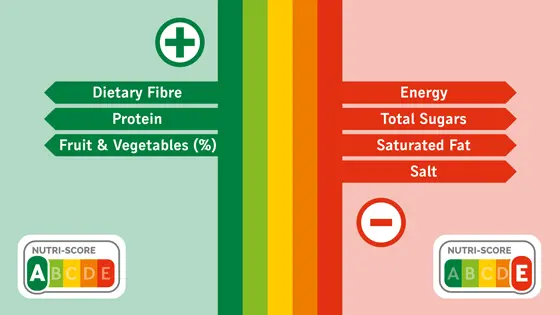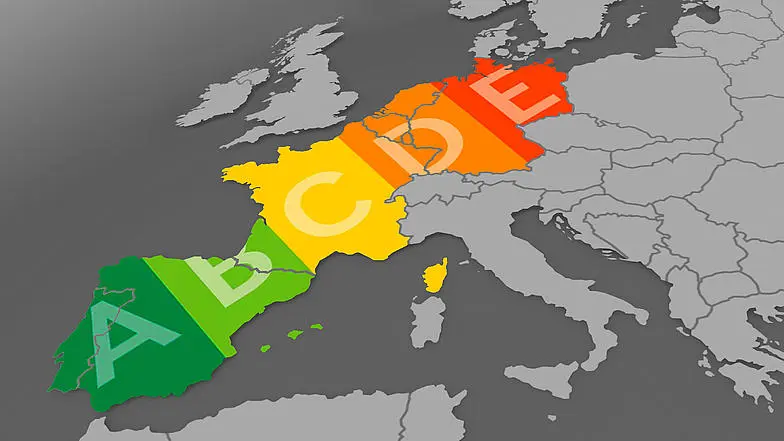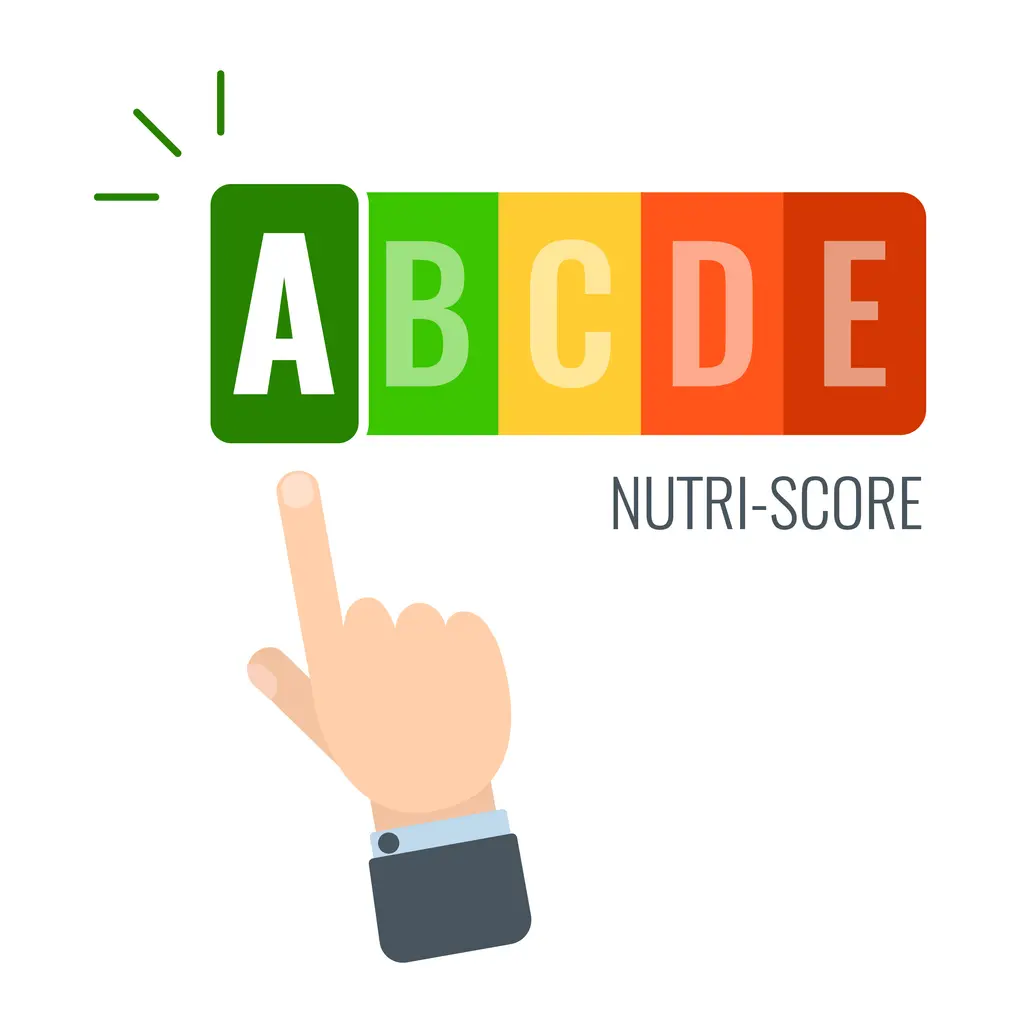The Nutri-Score has emerged as one of Europe's most debated food policy initiatives, representing both a promising tool for public health and a source of significant political and commercial controversy. As of 2025, this color-coded nutrition labeling system finds itself at a critical juncture, with its future across the European Union remaining uncertain despite years of development and scientific validation.
What is Nutri-Score?

Nutri-Score is a front-of-pack nutrition labeling system that uses a five-level scale ranging from dark green A to red E to indicate the overall nutritional quality of packaged food products. The system was created by Santé Publique France, the French public health agency, based on work by Professor Serge Hercberg from Sorbonne Paris North University. The label assigns products a rating letter from A (best) to E (worst), with associated colors from green to red.
The algorithm underlying Nutri-Score calculates scores based on nutrients and foods to be encouraged (proteins, fiber, fruit, vegetables, legumes, nuts, and rapeseed, walnut and olive oils) versus those to be limited (energy, saturated fatty acids, sugars, salt) per 100 g or 100 ml of the product. This calculation method is derived from the United Kingdom Food Standards Agency nutrient profiling system (FSA score).
The 2024-2025 Algorithm Revolution
Major Updates and Changes
A significant milestone occurred in 2024 when seven European countries adopted an updated algorithm that came into force on January 1, 2024. The new algorithm represents the result of extensive work by the Scientific Committee since 2021 to bring the logo more in line with dietary guidelines of different countries involved.
The updated algorithm includes stricter ratings for sugar, salt, sweeteners, and low dietary fiber content, while high protein content is rated better. Additionally, the system now features improved classification for beverages, with nuts and oils receiving their own category.
Implementation Timeline Across Countries
The rollout of the updated algorithm has followed a staggered approach:
- Germany, Belgium, Switzerland and the Netherlands: Updated algorithm came into force on January 1, 2024
- Luxembourg: Implementation began on March 5, 2024
- France: The new algorithm was implemented on March 16, 2025
Companies have been given transition periods until December 31, 2025 to implement the new calculations.
Key Algorithmic Improvements

The 2024 updates addressed several critical areas identified by the Scientific Committee:
Beverages: All potable products are now rated using the algorithm for beverages, with milk, milk drinks, and plant-based beverages evaluated using the updated beverage algorithm rather than the general foods algorithm. Water remains the only beverage that can achieve a Nutri-Score A.
Whole Grains and Fiber: The system now better discriminates between whole grain products rich in fiber and refined products, with refined variants receiving less favorable ratings on average.
Oils and Fats: Vegetable oils with high content of nutritionally favorable unsaturated fatty acids now receive more favorable ratings, increasing discrimination for this product group.
Meat Products: White meat and its products are rated better than red meat alternatives, aligning with current nutrition recommendations.
Sugar and Salt: The algorithm now provides stricter ratings for foods with comparably high sugar and salt content, better aligning with general nutrition recommendations.
Current Adoption Status Across Europe
Countries with Official Adoption

As of 2025, eight countries have officially adopted Nutri-Score:
- France (2017) - Original implementer
- Belgium (formally since April 2, 2019)
- Spain (2018)
- Germany (2020)
- Luxembourg (2020)
- Netherlands (2021)
- Switzerland (2019)
- Romania (2025) - Most recent addition, implementing voluntary system
These countries are collectively referred to as "COEN" (Countries Officially Engaged in the Nutri-Score).
Countries with Voluntary Industry Adoption
Several countries without official government endorsement have seen voluntary adoption by food companies:
- Portugal and Slovenia: Companies like Nestlé, Auchan, and Danone use Nutri-Score
- Austria: Some food companies have adopted the system voluntarily
- Ukraine: Silpo, the country's second-largest supermarket chain, adopted Nutri-Score for its store brand produce
Industry Participation
As of summer 2025, almost 1,000 companies with around 1,420 brands are registered for the Nutri-Score, with the number of registrations continuing to rise. Companies that register commit to labeling all products of a registered brand with the Nutri-Score within two years of registering, or within three years in exceptional cases.
European Union Regulatory Landscape
The Farm to Fork Strategy Promise
The European Commission committed as part of its "From Farm to Fork" strategy to propose a mandatory EU-wide harmonized front-of-pack nutrition labelling scheme by 2023. However, the Commission failed to meet this self-imposed deadline, and the future of EU-wide mandatory nutrition labeling remains uncertain.
Current Regulatory Status
Under European regulation No. 1169/2011 (INCO regulation), front-of-pack nutrition labeling is not mandatory but can be provided on a voluntary basis. Countries cannot unilaterally impose their own food labelling system due to EU laws, therefore they can only give recommendations.
The Abandoned EU Mandate
In March 2025, reports emerged that the European Commission had abandoned plans to implement mandatory front-of-pack nutrition labels via Nutri-Score across the EU's 27 member states. Documents leaked by NGO Foodwatch revealed that Wolfgang Burtscher, director-general for agriculture at the European Commission, assured that future labeling proposals "will not copy any existing system".
This decision represents a significant policy reversal after years of preparation and scientific evaluation. The Commission's spokesperson refused to confirm whether mandatory Nutri-Score labelling plans had been shelved but did not confirm the initiative was still backed either.
The Italian Opposition Campaign

Constitutional Amendment Strategy
Italy has mounted the most systematic opposition to Nutri-Score, culminating in a proposed constitutional amendment that would protect "products that symbolise national identity". The amendment, introduced by MP Tommaso Foti in Italy's House of Deputies, reads: "The Republic guarantees the healthy nutrition of its citizens. To this end, it pursues the principle of food sovereignty and protects products that symbolise national identity".
Concerns About Traditional Foods
Italian opposition stems from concerns that Nutri-Score unfairly discriminates against traditional Italian foods including olive oil, Parma ham, and Parmigiano cheese. Extra virgin olive oil receives a D rating and is colored orange, which Italian authorities consider misleading given its recognized health benefits.
Lobbying Efforts and Political Influence
Extensive documentation reveals the scope of Italian lobbying efforts. Between October 4-28, 2022, Italian delegations held multiple meetings with EU agriculture officials, including sessions with the Italian agro-industry employers' trade body Federalimentaire.
Meeting minutes show that "in Italy the government, the industry and farmers are all opposed to Nutriscore or similar front of pack nutrition labelling (FOPNL)" and that this represents "clearly a red line for the Italian government".
The Nutrinform Battery Alternative
Italy has promoted its own Nutrinform Battery system as an alternative to Nutri-Score. This system provides nutritional information highlighting portions recommended by nutritionists and the relative contribution of calories, salt, sugars, and fats to one's diet, rather than providing an overall quality score.
Scientific Evidence and Effectiveness
Research Validation
The scientific foundation for Nutri-Score is substantial. A 2023 scientific report by 316 scientists and health professionals detailed rigorous scientific evidence supporting Nutri-Score, including studies performed over many years in some 20 countries with cohort studies involving more than 500,000 subjects with long-term follow-up.
The research validates both the algorithm underlying the Nutri-Score calculation and its effectiveness to help consumers make healthier choices. Studies demonstrate that Nutri-Score performs well in classifying products in accordance with dietary guidelines.
Industry Bias in Research
Notably, research bias appears in studies critical of Nutri-Score. A study found that research is 21 times more likely to find unfavorable results about Nutri-Score if authors declare a conflict of interest or the study is funded by the food industry.
Consumer Understanding and Usage
Public consultation data from December 2021 to March 2022 revealed that 65% of 3,225 responses came from EU citizens. The option to provide 'information on a product's overall nutritional value through a graded indicator' was considered most likely to encourage changes in food purchasing behavior, reaching 83% among academic institutions, 72% among consumer organizations, and 69% among citizens.
Current Implementation Challenges
Transition Period Complications
The algorithm update has created significant implementation challenges. Companies face complex transition requirements, with products placed on the market after December 31, 2023 required to use the updated algorithm. However, regulatory procedures were not finalized simultaneously across all COEN countries, creating market fragmentation.
Industry Concerns and Complaints
Major food companies have expressed concerns about the system's complexity. Companies, including most recently Danone, have called out complexities within the five-colour A to E Nutri-Score front-of-pack labelling system. The reclassification outcomes from the 2024 algorithm changes have led to unexpected results, adding to industry frustration.
Enforcement and Compliance
Countries have established different enforcement mechanisms. In Romania, operators who fail to comply with rules may have their rights revoked, face audits, or be subject to sanctions or legal action. The National Authority for Consumer Protection (ANPC) serves as the regulator responsible for implementation and supervision.
Impact on Food Reformulation

Product Improvement Incentives
Evidence suggests Nutri-Score motivates companies to work towards creating products that score towards the green side of the scale. RIVM investigated this theoretically in 2021, finding that lowering sugar and salt amounts or raising positive ingredients like vegetables in meals improves Nutri-Score ratings.
Market Evidence of Reformulation
Recent studies show reformulation trends in countries with Nutri-Score adoption. In the Netherlands, breakfast cereals, meat preserves, and confectionery had lower sugar and/or saturated fat content in 2020 compared to 2018. In five European countries, breakfast cereals and processed potato products had less salt, and bread products had less sugar between 2019 and 2021.
Long-term Market Changes
The extended nutritional labelling with Nutri-Score can ultimately lead to the creation of products with more nutritional value. This reformulation effect represents one of the system's most significant public health benefits beyond consumer information.
Future Prospects and Challenges
Scientific Committee Ongoing Work
The Nutri-Score Scientific Committee continues its mandate to update the algorithm based on new scientific knowledge. The committee retains the across-the-board nature of the algorithm and constraints over elements that can be included while investigating improvements through literature reviews and database analysis.
Political Uncertainty
The political landscape for Nutri-Score remains highly uncertain. With the European Commission's apparent abandonment of mandatory EU-wide implementation, the system's future depends on individual country adoption and voluntary industry participation.
Consumer Advocacy Pressure
Despite political setbacks, consumer organizations continue advocating for mandatory implementation. Foodwatch and other consumer groups maintain campaigns for a mandatory, harmonised EU front-of-pack nutrition labelling system, arguing it represents "the best option to help citizens make choices on their food in the supermarket".
Regulatory Framework and Technical Requirements
Registration Process
Companies wishing to use Nutri-Score must register with and accept conditions set by the French trademark owner "Santé publique France". The registration can be completed online in five easy steps, and companies agree to display the symbol on all categories of products under registered brand names within specified timeframes.
Calculation Methodology
The algorithm uses information from the mandatory nutritional table and ingredient lists. Favorable nutrients include fiber, protein, and proportions of fruit, vegetables, and pulses, while unfavorable components include sugar, salt, saturated fatty acids, and high energy density. An Excel table assists companies in calculating Nutri-Score ratings.
Governance Structure
The system operates under transnational governance with a Steering Committee comprising desk officers from participating countries. The Scientific Committee includes experts from COEN countries who work to achieve uniform use across countries and promote further development.
Nutri-Score in 2025 represents a system at a crossroads, with demonstrated scientific validity and consumer support confronting significant political and commercial resistance. While the algorithm updates have strengthened its alignment with dietary guidelines, the absence of EU-wide mandatory implementation leaves its future dependent on national-level decisions and voluntary industry adoption. The system's evolution continues to reflect broader tensions between public health policy, commercial interests, and national food identity across Europe.